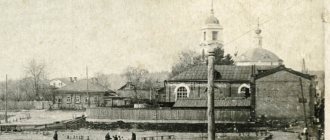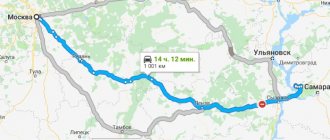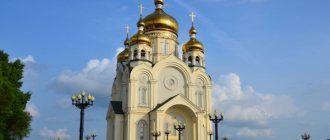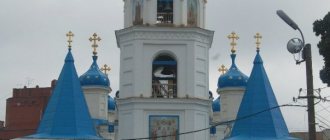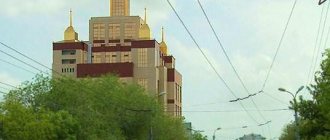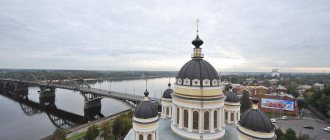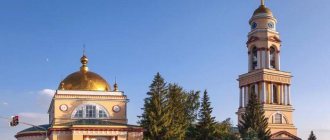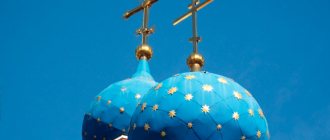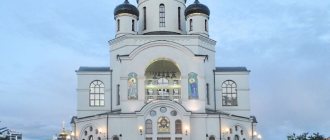Mir
Russia Kursk region Kursk Sergius-Kazan Cathedral (Kursk) Map loading in progress...
{"format":"leaflet","minzoom":false,"maxzoom":false,"limit":50,"offset":0,"link":"all","sort":[""], "order":[],"headers":"show","mainlabel":"","intro":"","outro":"","searchlabel":"\u2026 \u0441\u043b\u0435\ u0434\u0443\u044e\u0449\u0438\u0435 \u0440\u0435\u0437\u0443\u043b\u044c\u0442\u0430\u0442\u044b","default":"","import-annotation":false,"width ":"auto","height":"350px","centre":{"text":"","title":"""link":"""lat":51.7355400000000003046807250939309597015380859375,"lon": 36.19688000000000016598278307355940341949462890625,"icon":""},"title":"","label":"","icon":"","lines":[],"polygons":[],"circles":[ ],"rectangles":[],"copycoords":false,"static":false,"zoom":8,"defzoom":14,"layers":["OpenStreetMap"],"image layers":[] ,"overlays":[],"resizable":false,"fullscreen":true,"scrollwheelzoom":true,"cluster":false,"clustermaxzoom":9,"clusterzoomonclick":true,"clustermaxradius":80, "clusterspiderfy":true,"geojson":"","clicktarget":"","showtitle":true,"hidenamespace":false,"template":"","userparam":"","activeicon": "","pagelabel":false,"ajaxcoordproperty":"","ajaxquery":"","locations":[{"text":"\u003Cb\u003E\u003Ca href=\"/palomnik/%D0% A1%D0%B5%D1%80%D0%B3%D0%B8%D0%B5%D0%B2%D0%BE-%D0%9A%D0%B0%D0%B7%D0%B0%D0%BD %D1%81%D0%BA%D0%B8%D0%B9_%D1%81%D0%BE%D0%B1%D0%BE%D1%80_(%D0%9A%D1%83%D1%80% D1%. u0441\u043e\u0431\u043e\u0440 (\u041a\u0443\u0440\u0441\u043a)\»\u003E\u0421\u0435\u0440\u0433\u0438\u0435\u0432\u043e-\u041a \u0430\u0437\u0430 \u043d\u0441\u043a\u0438\u0439 \u0441\u043e\u0431\u043e\u0440 (\u041a\u0443\u0440\u0441\u043a)\u003C/a\u003E\u003C/b\u003E\u 003Chr /\u003E\ u003Ca href=\"/palomnik/%D0%A1%D0%B2%D0%BE%D0%B9%D1%81%D1%82%D0%B2%D0%BE:%D0%90%D0%BD% D0%BD%D0%BE%D1%82%D0%B0%D1%86%D0%B8%D1%8F\" title=\"\u0421\u0432\u043e\u0439\u0441\u0442\u0432\u043e: \u0410\u043d\u043d\u043e\u0442\u0430\u0446\u0438\u044f\»\u003E\u0410\u043d\u043d\u043e\u0442\u0430\u0446\u0438\u044f\u003C/ a\u003E: "'\ u0421\u0435\u0440\u0433\u0438\u0435\u0432\u043e-\u041a\u0430\u0437\u0430\u043d\u0441\u043a\u0438\u0439 \u0441\u043e\u0431\u0 43e\u0440»' \u043f\u043e \u0441\u0442\u0440\u043e\u0435\u043d \u0432 \u003Cspan class=\»smw-highlighter\» data-type=\»2\» data-state=\»persistent\» data-title=\»\ u0418\u043d\u0444\u043e\u0440\u043c\u0430\u0446\u0438\u044f\" title=\"\u0026#039;\u0026#039;\u0026#039;\u0421\u0435\u0440\u0433\u 0438 \u0435\u0432\u043e-\u041a\u0430\u0437\u0430\u043d\u0441\u043a\u0438\u0439 \u0441\u043e\u0431\u043e\u0440\u0026#039;\u0026#0 39;\u0026#039; \u043f\u043e\u0441\u0442\u0440\u043e\u0435\u043d \u0432 1752\u20141778 \u0433\u043e\u0434\u0430\u0445 \u0432 \u0441\u0442\u 0438\u043b\u0435\u0435\u043b\u0438\ u0437\u0430\u0432\u0435\u0442\u0438\u043d\u0441\u043a\u043e\u0433\u043e\u0431\u0430\u0440\u043e\u043a\u043a\u043e\u043d\u0 430\u043c\u0435\u0441\u0442\ u0435 \u0441\u0433\u043e\u0440\u0435\u0432\u0448\u0435\u0439 \u0434\u043e \u043e\u0441\u043d\u043e\u0432\u0430\u043d\u0438\u 044f\u0432 1751\u0433\u043e\u0434 \u0443 \u043e\u0434\u043d\u043e\u044d\u0442\u0430\u0436\u043d\u043e\u0439 \u0446\u0435\u0440\u043a\u0432\u0438 \u0432\u043e \u0438\u043c\u044f \u0421\u0435 \u0440\u0433\u0438\u044f \u0420\u0430\u0434\u043e\u043d\u0435\u0436\u0441\u043a\u043e\u0433\u043e. \u0421\u043e\u0431\u043e\u0440 \u0441\u0432\u044f\u0437\u0430\u043d \u0441 \u043f\u0430\u043c\u044f\u0442\u044c\u044e \u043 f\u0440\u0435\u043f\u043e\u0434 \u043e\u0431\u043d\u043e\u0433\u043e \u0421\u0435\u0440\u0430\u0444\u0438\u043c\u0430 \u0421\u0430\u0440\u043e\u0432\u0441\ u043a\u043e\u0433\u043e,\ u0440\u043e\u0434\u0438\u0442\u0435\u043b\u044c \u043a\u043e\u0442\u043e\u0440\u043e\u0433\u043e, \u043a\u0443\u043f\u0435\u 0446\u041c\u043e\u0448\u043d \u0438\u043d, \u0443\u0447\u0430\u0441\u0442\u0432\u043e\u0432\u0430\u043b \u0432 \u043f\u043e\u0441\u0442\u0440\u043e\u043 9\u043a\u0435 \u0445\u0440\ u0430\u043c\u0430.\»\u003E\u003Cspan class=\»smwtext\»\u003E \u2026 \u003C/span\u003E\u003Cspan class=\»smwttcontent\»\u003E»'\u0421\u0435\u0440\u043 3 \u0438\u0435\u0432\u043e-\u041a\u0430\u0437\u0430\u043d\u0441\u043a\u0438\u0439 \u0441\u043e\u0431\u043e\u0440"' \u043f\u04 3e\u0441\u0442\u0440\ u043e\u0435\u043d \u0432 1752\u20141778 \u0433\u043e\u0434\u0430\u0445 \u0432 \u0441\u0442\u0438\u043b\u0435 \u0435\u043b\u0 438\u0437\u0430\u0432\u0435\u0442\u0438 \u043d\u0441\u043a\u043e\u0433\u043e \u0431\u0430\u0440\u043e\u043a\u043a\u043e \u043d\u0430 \u043c\u0435\u0441\u0442\u0435 \u0441\u0433\u043e\u0440\u0435 \u0432\u0448\u0435\u0439 \u0434\u043e \u043e\u0441\u043d\u043e\u0432\u0430\u043d\u0438\u044f \u0432 1751 \u0433\u043e\u0434 \u0443 \u043e\u0434\u043d\u043e\ u044d\u0442\u0430\u0436\u043d\u043e\u0439 \u0446\u0435\u0440\u043a\u0432\u0438 \u0432\u043e \u0438\u043c\u044f \u0421\u0435\ u0440\u0433\u0438\u044f\u0420\ u0430\u0434\u043e\u043d\u0435\u0436\u0441\u043a\u043e\u0433\u043e. \u0421\u043e\u0431\u043e\u0440 \u0441\u0432\u044f\u0437\u0430\u043d \u0441 \u043f\u0430\u043c\u044f\u0442\u044c\u044e \u043 f\u0440\u0435\u043f\u043e\u0434 \u043e\u0431\u043d\u043e\u0433\u043e \u0421\u0435\u0440\u0430\u0444\u0438\u043c\u0430 \u0421\u0430\u0440\u043e\u0432\u0441\ u043a\u043e\u0433\u043e,\ u0440\u043e\u0434\u0438\u0442\u0435\u043b\u044c \u043a\u043e\u0442\u043e\u0440\u043e\u0433\u043e, \u043a\u0443\u043f\u0435\u 0446\u041c\u043e\u0448\u043d \u0438\u043d, \u0443\u0447\u0430\u0441\u0442\u0432\u043e\u0432\u0430\u043b \u0432 \u043f\u043e\u0441\u0442\u0440\u043e\u043 9\u043a\u0435 \u0445\u0440\ u0430\u043c\u0430.\u003C/span\u003E\u003C/span\u003E\u0443\u043f\u0435\u0446 \u041c\u043e\u0448\u043d\u0438\u043d, \u0443\u0447\ u0430\u0441\u0442\ ", "title":"\u0421\ u0435\u0440\u0433\u0438\u0435\u0432\u043e-\u041a\u0430\u0437\u0430\u043d\u0441\u043a\u0438\u0439 \u0441\u043e\u0431\u043e\u0 440 (\u041a\u0443\u0440\ u0441\u043a)","link":"","lat":51.7355400000000003046807250939309597015380859375,"lon":36.19688000000000016598278307355940341949462890 625,"icon":""}],,"imageLayers":[]}
51.735504; 36.196563
Russia, Kursk, Maxim Gorky street, 27
Kursk, Kursk region 305000
Russia
Telephone:
(4712) 51-38-49, 51-38-80
Sergius-Kazan Cathedral
built in 1752-1778 in the Elizabethan Baroque style on the site of a one-story church in the name of Sergius of Radonezh that burned to the ground in 1751. The cathedral is associated with the memory of St. Seraphim of Sarov, whose parent, the merchant Moshnin, participated in the construction of the temple.
Holy sign
The Sergius-Kazan Cathedral in Kursk took the place of a wooden building that housed a parish church built in honor of St. Sergius of Radonezh. It was completely burned at the beginning of the 18th century.
In the process of clearing the ashes, people discovered a wonderful thing - one of the icons miraculously survived the flames of the fire. It was the face of the Kazan Mother of God. Despite the fact that the shrine was in ashes, it remained completely invulnerable. This became the impetus for the construction of a new stone church building on the site of the wooden church. The Most Holy Theotokos uniquely blessed the residents of the city for this good deed.
In order to preserve the memory of the church in honor of St. Sergius of Radonezh, they decided to name the lower church after him. The upper festive one was given the name of the Kazan Icon of the Mother of God. The icon that survived the fire became a guiding sign for good deeds.
Shrines and patronal feasts
The cathedral houses many shrines. Among them:
- icon of St. Sergius of Radonezh with a particle of his relics;
- particle of the relics of St. Seraphim of Sarov;
- cancer with particles of the relics of forty saints: ap. Andrew the First-Called. Matthew and James, Mary Magdalene, the prophet Daniel, martyr. Barbara, many Russian saints, etc.;
- The Gospel from the reign of Peter the Great. The book has a gilded silver frame. Its weight is 16 kg, length – 60 cm, width – 40 cm.
Patronal feasts in the cathedral are celebrated on the following days:
- Kazan Icon of the Blessed Virgin Mary - July 21, November 4;
- St. Sergius of Radonezh - July 18, October 8.
Icon of St. Sergius of Radonezh with a piece of his relics
Miracle case
During the construction of the Sergius-Kazan Cathedral in Kursk, a miraculous event happened. One day Agafya Moshnina and her son climbed to the top of the bell tower. And the boy suddenly lost his balance, falling down from a great height. He fell on a pile of construction debris. The desperate mother did not hope to see her son alive. But he not only survived, but was not even injured.
Over time, this boy Prokhor became known as the great Russian saint Seraphim of Sarov. A bright path in life was prepared for him. The place where he fell as a child is now marked with a memorial sign. One of the chapels of the temple is dedicated to this amazing man.
The first thing after the construction of the temple was the consecration of the lower church. 15 years passed and the same procedure was applied to the upper temple. The construction of the iconostasis looks impressive - an almost 20-meter creation, arranged in three tiers. It is truly magnificent.
Architecture and decoration of the temple
A slender, light, richly decorated temple in the Baroque style with ribbed domes, torn pediments, numerous windows of different sizes, proportions and designs. The cathedral has the shape of a rectangle about 16 meters wide and about 33 meters long with a pentagonal altar apse. The main part of the cathedral is a two-story building ending with a quadrangle carrying an octagonal dome with the same number of windows. In the center of the dome there is a four-color lantern, from which the head of the dome, crowned with a golden cross, rushes to the sky. The outer walls are decorated with stucco figures. The domes are painted blue with gilded stars, which enhances the impression of wealth and festivity. The eighteen-meter iconostasis of the temple, created by serf craftsmen - woodcarvers, is a real work of art: thin weaves covered with gold are illuminated through windows, originally arranged in the upper part. The iconostasis fills the width of the entire altar barrier. A complex flowing chandelier successfully complements the iconostasis. There are gilded stucco reliefs along the walls and under the arches of the temple.
Architecture Features
The St. Sergius-Kazan Cathedral of Kursk, the schedule of services of which is indicated on the official website of this religious organization, belongs to the Elizabethan Baroque in architectural style. The traditional composition has the shape of a ship and contains a bell tower, a refectory, a section of the main temple and an altar subway. The project indicated that the length of the structure would be 33 meters. This is almost twice the width of the building. This feature ensured the building's correct shape. After an extension was built in the 19th century, this strict proportionality was destroyed.
Architecture of the Sergius-Kazan Cathedral
The plan of the Kazan Cathedral resembles a ship. The bell tower, refectory, temple, and altar are located alternately from west to east. The length of the building, in accordance with the original design, was 33 meters, and the width was half that, so that the temple had the correct geometry. But the extension, created in the 19th century. violated the original proportion.
Compressed by the fence, the temple looks very massive and resembles a palace. To avoid too heavy a perception, the builders used a minimal amount of decoration that could be used in a lush Baroque style.
Due to the fact that the walls were decorated rather modestly, it was possible to add pomp to the upper tiers. The octagonal vaults have their own decorations with columns, and there is a tetrahedral light drum on the dome. The chapter in particular follows the style of Rastrelli. The bell tower looks more restrained, but does not disturb the harmony of the entire composition.
On the western side there is an extension - a portico, combining baroque and classicism. It was erected in the 30s. XIX century With its appearance, the integrity of the composition was disrupted, but at the same time, a kind of sequential descent of different sections of the temple arose.
XX century
The Sergius-Kazan Cathedral in Kursk, like many other churches, over time also urgently felt the need for restoration work.
At the beginning of the 20th century, the floors in the building were re-floored. The arches of the lower temple acquired a marble finish. But the building itself remained the same, without significant changes.
The paint on the roof and walls was also refreshed, and the sculptural ornamentation of the facade was restored.
The years of socialism did not pass without a trace for this temple. The era of atheism demanded the cessation of religious services. But the temple survived the times of godlessness relatively calmly. The upper part of the building was given over to an art gallery. An art workshop was organized in the lower church.
The former church was later used as a museum of atheism. But this was also good for the shrine, since icons and other religious exhibits from the entire city were transported here. Thus, they were preserved to this day. As you can see, the support of the holy forces never left this building.
author: V. STEPANOV
SERGIEV-KAZAN CATHEDRAL
The mid-eighteenth century was marked in Russia by the triumph of the magnificent and brilliant Baroque architectural style. At this time, the architect V.V. Rastrelli, the brightest representative of this style, created his best creation - the “Winter Palace” - the pinnacle of his creativity, symbolizing the heyday of Russian Baroque.
These years coincided with the beginning of construction in Kursk in 1752 of the parish Kazan-Sergievskaya or, as parishioners then said, Sergiuskaya Church, the current Sergius-Kazan Cathedral, a real pearl of Kursk architecture.
... Even when approaching Kursk from the east, in the blue distance on a picturesque steep and high hill near the bank of the Tuskar River, just above the cliff, the majestic cathedral rises like a large and slender blue and white ship, the silhouette of which is not suppressed even by the high-rise building of the Kursk Hotel , built nearby. If you are standing next to the cathedral, it is so tall that the tightness of the intersection of M. Gorky and Mozhaevskaya streets will certainly make you throw your head up sharply to better see the onion-shaped dark blue domes with bright golden stars... Elegant in its colors, rich in interior decoration, festive - this is how this architectural masterpiece appears before us.
The authorship of the cathedral building has long been attributed to V.V. Rastrelli, and in the seventh volume of “Picturesque Russia”, published at the beginning of the 19th century, under a photograph of, as it says, “Kazan Cathedral”, it is said that the building was built according to the plan of the famous Rastrelli. However, the architect himself, in the list of his works compiled by him, in addition to buildings in St. Petersburg, the Baltic states and Moscow, mentioned only St. Andrew's Cathedral in Kyiv. There are no archival documents confirming that the Kursk building of the Sergius-Kazan Cathedral was built according to the drawings of V.V. Rastrelli.
But it is no coincidence that V.V. Rastrelli became the trendsetter of Russian architectural fashion of the mid-18th century, the fashion that reflected in the solemn and elegant architectural ensembles of Russia the national awareness of the increased power of the sovereign and the rise of a new culture. In the capital or in the provinces, a building in the “Rastrelli style” became a criterion for magnificent construction, and it is no coincidence that the majority of Russian builders of the forties and fifties of the 18th century worked, imitating the manner of the great architect. It is also known that a number of architects, a huge group of painters and decorators, grouped around Rastrelli - they spread the creative style of the famous architect throughout Russia.
In the Sergius-Kazan Cathedral, much is reminiscent of the architect’s characteristic techniques: the plan and composition are similar to Rastrelli’s buildings, elegant window frames, columns are directly adjacent to the massive walls; groups of columns or pilasters layered one on top of the other emphasize the angles of the building’s volumes with systems of verticals; on the pilasters, instead of the final capitals, there are cartouches. The same cartouches are on the lantern of the cathedral dome.
Sergius Church was built on the site of a one-story wooden parish church in the name of Sergius of Radonezh that burned to the ground. Hence the old name of the street on which the church stands - Sergievskaya, hence the name of the current cathedral. Then, after the disastrous burning of the church, the parishioners unanimously decided to build a new two-story church. In the clergy registers there is a message that “this church was established at the expense of the Kursk merchant K. E. Pervyshev with voluntary donations from parishioners.”
Until 1833, it was an ordinary parish church under the name of Kazansko-Sergievskaya, but with the transfer of the episcopal see that year from Belgorod to Kursk, according to the definition of the synod, it was transformed for its splendor and beauty into the Kazan-Bogoroditsky Cathedral.
In plan, the church was a rectangle with one altar apse. If you look at the cathedral from the east, it looks like a three-story building, each floor of which is emphasized by a cornice. The bell tower is also three-tiered. There are two churches inside the building: lower and upper. The lower (winter) church in the name of St. Sergius of Radonezh has a small height of its vaults and is inferior in illumination and richness of decorative decoration to the upper church. The interior of the upper church in the name of the Kazan Mother of God is much more interesting. Here, in addition to window lighting on both sides in the middle part, the room is illuminated by lantern and dome windows. There is also a wonderful carved wooden and gilded iconostasis, the decorative basis of which is architectural and plant forms. We have to regret that the outstanding iconostasis of high artistic value is not as well known in our country as, say, the famous iconostasis in Pskov, Smolensk and St. Petersburg, but it deserves it thanks to the remarkable art of its execution.
The stone building was completed in 1762. The lower church was consecrated at the same time, the upper church was consecrated only in 1778, and the sixteen-year gap between the consecrations of these churches was caused by long and painstaking work on the excellent iconostasis.
Initially, to get to the upper church, it was necessary to climb two external cast-iron stairs, but due to obvious inconveniences (ice on the steps, etc.) in 1837, an Empire style staircase was added to the bell tower according to the design of the “City” architect Groznon, which violated the stylistic unity of the building. Basically, the cathedral has retained its original appearance to this day on the northern, eastern and southern sides, since apart from painting the walls, roofs and restoration of sculptural details, no major work was carried out on the facades. Inside the cathedral in the lower church in 1866, the floors were repaved and the arches were decorated with marble.
After the end of the Crimean war, the banners of the 39th and 40th Kursk squads and 14 banners of the Kursk district squads that participated in the defense of Sevastopol were deposited in this cathedral in a solemn atmosphere to the sounds of a march of a military orchestra and the ringing of bells (8146 warriors of the Kursk militia received bronze medals for participation in the Crimean war). The banners were displayed unfolded in the upper church on the opposite wall from the iconostasis. Where are these holy banners now?
Despite the fact that the parish Sergius Church was built on the outskirts of what was then Kursk near lakes and cabbage gardens, the enormous size and beauty of the building made this church the main one in the grand opening of the Kursk governorship on December 27, 1779. In this cathedral, in the presence of the famous commander Field Marshal P.A. Rumyantsev-Zadunaisky, after the liturgy, the imperial announcement about the opening of the viceroyalty was read. The vaults of the cathedral have seen many Russian tsars. Empress Catherine II, having examined the church, did not express much admiration, since at that time she clearly gravitated towards the classical style. But her great-grandson, Alexander II, approaching the cathedral, exclaimed in admiration: “I recognize Rastrelli!”
The cathedral is associated with the memory of St. Seraphim of Sarov, whose father, the merchant Mashnin, participated in the construction of the temple. Seven-year-old Prokhor Mashnin (the future Saint Seraphim of Sarov) fell from the wooden scaffolding surrounding the bell tower under construction, but remained alive and unharmed. Now a memorial sign has been erected at the site of the boy's fall.
Nowadays the Sergius-Kazan Cathedral is a famous monument of Kursk architecture, under state protection as a monument of federal significance. Every time you pass by the picturesque facade of the cathedral, you involuntarily admire it. I recall the words of Kursk prosecutor S. Larionov, a contemporary of the church’s construction, from his “Description of the Kursk Governorship,” published in 1786: “This church surpasses all others in its splendor.”
© Vladimir STEPANOV.
TABLE OF CONTENTS
Your comment:
| Read us in You can also see: Guide to Kursk by Tankov, 1902 Map of Kursk 1902 Photos of old Kursk |
The temple was rededicated
The Sergius-Kazan Cathedral in Kursk, a photo of which is provided in the article, underwent a reconsecration ceremony. The exact date of this event remains unknown. According to some sources, the event was preceded by the restoration of Gornostaev. Other sources indicate that the reconsecration ceremony was held in the middle of the last century in honor of the opening of the temple after restoration work.
There was a time when there was a change in the dedication of the upper and lower temples. The lower part was now dedicated to the Kazan Mother of God, and the upper temple to St. Sergius of Radonezh. The restored shrine has survived to this day. It impresses with the luxury of its decoration, preserved despite all the hardships of the past.
Interior decoration
The interior decoration of the walls of the temple was carried out in accordance with the requirements of the style. Despite the large number of stucco moldings and medallions, the decor does not oppress, but, on the contrary, gives a feeling of lightness and spaciousness. The color scheme is ideal for the temple of God - blue, white and gold.
If the iconostasis of the lower church delights with its grace, then the grandeur and splendor of the gilded iconostasis in the upper church causes real awe. It contains 56 icons.
The temples are connected by two wide granite staircases. The vestibule in the upper church is also the lower tier of a three-level bell tower.
Interior of the temple
Majestic iconostasis
Interior of the lower temple
Veneration of Seraphim of Sarov
Today the cathedral is full of signs by which one can judge the continued devotion of the parishioners to Saint Seraphim of Sarov. The memorial plaque installed on the facade of the building contains information that Prokhor Moshnin, who became the future Venerable Seraphim of Sarov, performed prayers here. The memorial plaque was installed in honor of the centenary anniversary of the saint’s canonization.
A year later, in 2004, they celebrated 250 years since the birth of Prokhor, who became a great ascetic. In honor of this bright event, a memorial chapel was erected.
Latest events
Recently, on the day of remembrance of the saint, the iconostasis was updated. The memory of Saint Seraphim does not fade in our time.
The place where the youth Prokhor fell when he climbed the bell tower with his mother is especially revered by believers. Previously, there was a well-groomed flower garden here. Later it was replaced by stone slabs and a memorial plaque was installed. It depicted a saint and featured an inscription about the events that happened.
Such actions were not supported by everyone. According to critics, it would be more correct for the place where the boy fell to remain untouched. But it should be noted that the appearance of a memorial tablet carries information to descendants. And this saves you from oblivion.
Information for visitors
The attraction can be found by studying the information on the cathedral website. Address of the Sergius-Kazan Cathedral in Kursk: Maxim Gorky Street, 2. The doors of the temple are open to all Orthodox Christians.
The schedule of the Sergius-Kazan Cathedral in Kursk is as follows: the temple is open from 7 a.m. to 7 p.m. Divine services are held here every day.
Schedule of services in the Sergius-Kazan Cathedral in Kursk:
- Morning service – from 7.30.
- Evening worship is at 5 p.m.
- On Sundays the morning service begins at 8 o'clock.
- Sunday school classes are held weekly from 12 noon to 4 pm.
To get to the cathedral from the capital, you can take the Nightingale train. In 8 hours it will take you to Kursk. When choosing a bus route, you should arrive at the Novoyasenevskaya station. The bus will pass through here. From the Teply Stan stop you can get directly to Kursk. Travel time will be 9 hours.
If you choose your own transport, the distance between the capital and Kursk will be 530 km. The path runs through cities such as Tula and Orel. You need to move along the Crimea highway.
Current state
Nowadays, the cathedral is active. Regular services are held there. Here the Sacrament of Baptism is performed every day, and the ritual is performed not only with babies, but also with adults. The temple has a baptistery in which an adult can immerse his head in water.
Parishioners have the opportunity to visit the large Orthodox library at the church. For young people, weekly classes are held in the assembly hall, where they are introduced to the basics of the Holy Scriptures and the Orthodox faith.
There is a sewing workshop attached to the sacristy. Through the efforts of its craftsmen, the shrouds of the Lord and the Virgin Mary, embroidered with gold and silver, appeared in the temple. Anyone can venerate these shrines on the holidays of Easter and the Dormition of the Blessed Virgin Mary.
The Sergius-Kazan Cathedral is responsible for the maintenance of the refectory in which the seminarians eat. Food assistance is also provided to people with disabilities and those simply in need. The book and icon shop is always open to the public; here parishioners will be offered a variety of spiritual literature, church utensils and images of saints.
The Sunday school accepts children of primary and senior school age, classes are held from 12:00 to 16:00.
Let's sum it up
Today the cathedral has become the center of spiritual life in this area of Kursk. Parishioners and anyone interested can visit the premises of the Orthodox library and select religious literature for study. The assembly hall of the cathedral is used for conducting classes with the younger generation.
Every year in spring and autumn there is a religious procession with the participation of clergy and parishioners. They carry banners and candles. This event is dedicated to the Kursk Icon of the Mother of God, called the “Sign”.
The cathedral's sacristy houses a rare relic - the shroud of Jesus himself. This is a rare, highly artistic work, created using gold and silver threads. Believers have the opportunity to pray at this sacred relic.
The cathedral has a refectory for students studying in the regency department at the Kursk Theological Seminary. Here you can always get food for body and soul. Thanks to the parishioners, there is food in the refectory. They bring food here as a donation.
In the icon and bookstore at the temple you can purchase relevant products. All icons are pre-consecrated. You can choose them for your home or as a gift. Studying church literature will help a Christian shape his spiritual development.

